Color as a water quality indicator: The power of ColorVis in municipal, industrial, and environmental applications
Water color is more than just a visual indicator—it’s often a reliable measure of water quality and contamination. Changes in color across urban runoff, as well as municipal and industrial effluent, can signify the presence of organic compounds, pollutants, and the efficiency of treatment processes.
As regulatory and environmental demands increase, continuous color monitoring becomes essential across a range of applications. The ColorVis sensor for the IQ SensorNet system provides a real-time, reliable solution for monitoring color in municipal, industrial, and surface water applications.
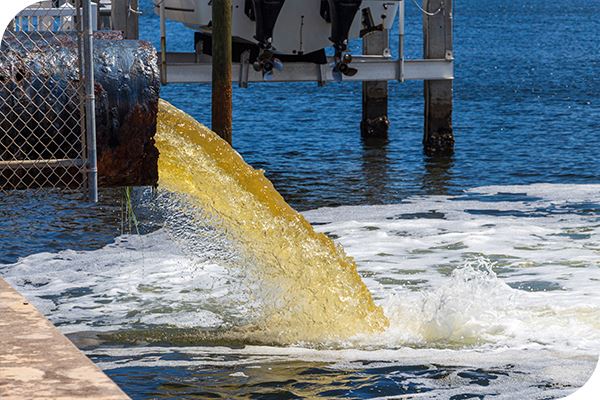
Industrial runoff can introduce pollutants and intense color into waterways, highlighting the importance of continuous color monitoring.
Why monitor color?
Color is a crucial indicator of water quality, revealing the presence of organic compounds, industrial pollutants, and the overall health of aquatic ecosystems. The ColorVis is equipped to monitor the following color ranges:
- Hazen 340, 350, 390 (0 to 2,100 mg/L Platinum-Cobalt [Pt-Co]): Ideal for low-to-moderate color levels common in treated municipal effluent. These scales provide clear insights into water clarity and treatment effectiveness, especially in public water sources.
- ISO 410 (0 to 5,300 mg/L Pt-Co): An international standard for measuring water color at 410 nm, especially relevant for sensitive ecosystems. This setting ensures effluent wastewater color remains within safe limits for surrounding waterways.
- Hazen 445, 455, 465 (150 to 10,000 mg/L Pt-Co): Suitable for detecting intense color concentrations, making it ideal for influent in municipal wastewater treatment plants, industrial effluent monitoring, or pre-treatment quality control.
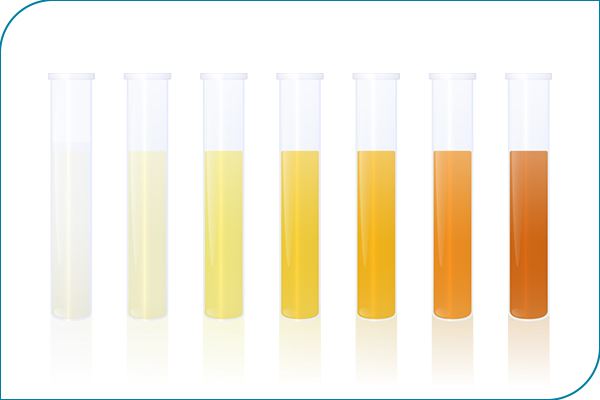
Glass tubes display a progression from clear to orange-tinted water, illustrating color variations measured by the Hazen scale.
Applications of the ColorVis sensor
Municipal wastewater treatment: Ensuring regulatory compliance
In municipal wastewater treatment, color changes can indicate the presence of dissolved organic matter, pollutants, or even untreated effluent. Monitoring color in treated and untreated wastewater can help plants meet regulatory standards and detect early signs of potential issues.
- Effluent quality control: By tracking color in the effluent, operators can detect any treatment inefficiencies, as color often correlates with the presence of organic materials or remaining pollutants.
- Typical color range for municipal effluent: 0 to 150 mg/L Pt-Co
- Influent monitoring: ColorVis sensors can assess influent quality. Sudden color changes in influent can signal unexpected pollutant loads, enabling operators to adjust treatment processes in real time.
- Typical color range for influent: 150 to 500 mg/L Pt-Co or higher in raw sewage
Industrial effluent monitoring and pre-treatment facilities: Ensuring regulatory compliance and quality control
Industries such as textiles and pulp and paper often discharge effluent with high color levels, which can impact downstream ecosystems. Industrial facilities must manage these pollutants to meet regulatory standards. Additionally, some regions have municipal pre-treatment facilities that receive wastewater from industrial and commercial sources, treating it before it enters municipal systems. ColorVis helps both industrial dischargers and pre-treatment facilities monitor and manage color levels effectively to ensure compliance and quality control.
- Regulatory compliance for industrial dischargers: Many industries, including textiles and chemical manufacturing, produce effluents with dyes and organic compounds that contribute to color. ColorVis sensors provide real-time monitoring to help these facilities meet discharge regulations.
- Pre-treatment quality control: Pre-treating industrial wastewater before it enters municipal treatment helps catch high pollutant loads early, allowing facilities to make adjustments and avoid potential fines or surcharges.
- Typical color range: 100 to 1,000 mg/L Pt-Co, with higher levels indicating significant contaminant loads
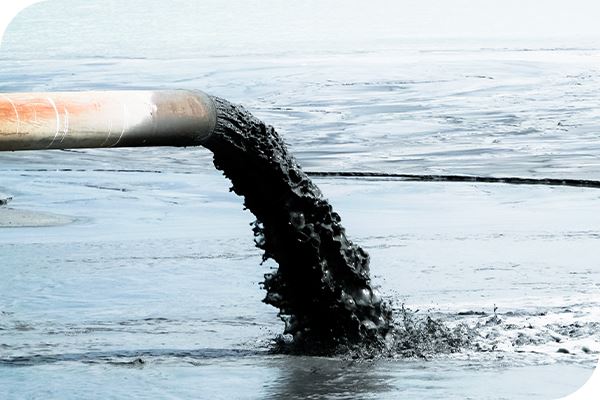
Industrial facilities must manage pollutants to meet regulatory standards.
Surface water monitoring: Tracking seasonal and pollution-related changes
Colors in rivers and lakes often shift due to seasonal vegetation decay, algae blooms, or urban runoff. By adding ColorVis to surface water monitoring stations, agencies gain an additional parameter for detecting organic or pollution-driven changes.
- Urban river networks: Metropolitan rivers often carry stormwater and runoff, introducing contaminants and discoloration. ColorVis sensors enable early detection of pollution events, helping agencies respond to environmental damage.
- Ecological health tracking: Environmental agencies use color as a practical indicator of organic matter or algae growth, both of which impact aquatic life. Continuous color data helps maintain ecosystem balance and prevent harmful algal blooms.
- Typical color range: 0 to 50 mg/L Pt-Co in natural waters; elevated levels can signal pollution
- Source water quality: For drinking water facilities, monitoring color in the source water they pull from provides early insights into contamination, allowing for timely pre-treatment adjustments.
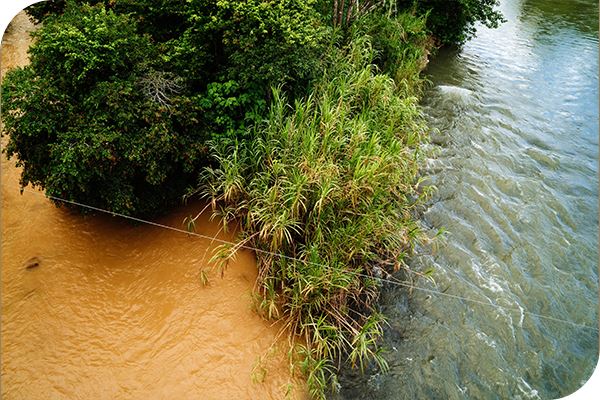
Storm conditions can influence water quality, as shown in the difference between these two waterways.
How ColorVis sensors work
ColorVis sensors use absorption measurement across multiple wavelengths and offer turbidity compensation for accurate, real-time results. Depending on application needs, operators can choose between True Color (with turbidity compensation) and Apparent Color measurements, allowing for adaptability across various water quality conditions.
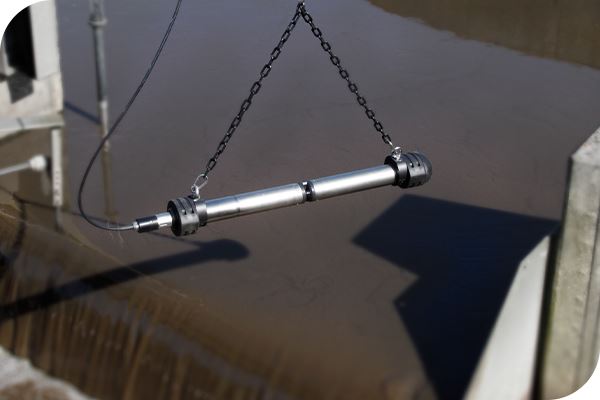
The ColorVis sensor is designed for continuous color monitoring.
Continuous color monitoring with ColorVis for better water quality management
ColorVis sensors provide a versatile and reliable solution for continuous color monitoring, meeting the needs of both municipal and industrial clients. With applications spanning municipal wastewater, pretreatment facilities, industrial effluents, and surface water quality, ColorVis helps operators ensure regulatory compliance, environmental protection, and improved water quality management.
